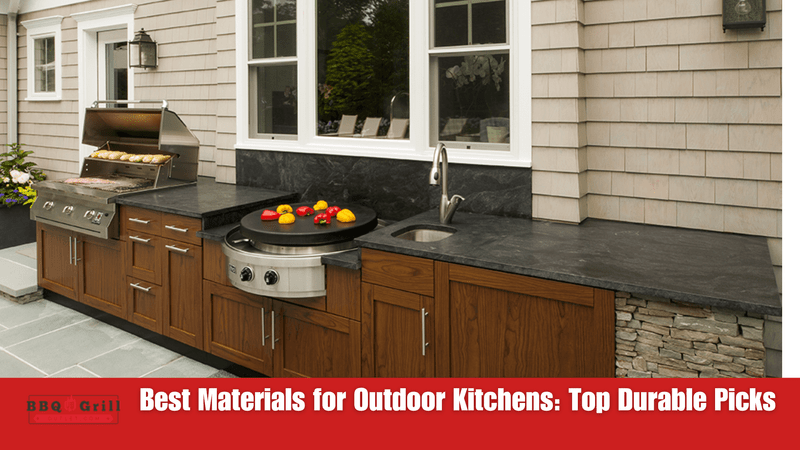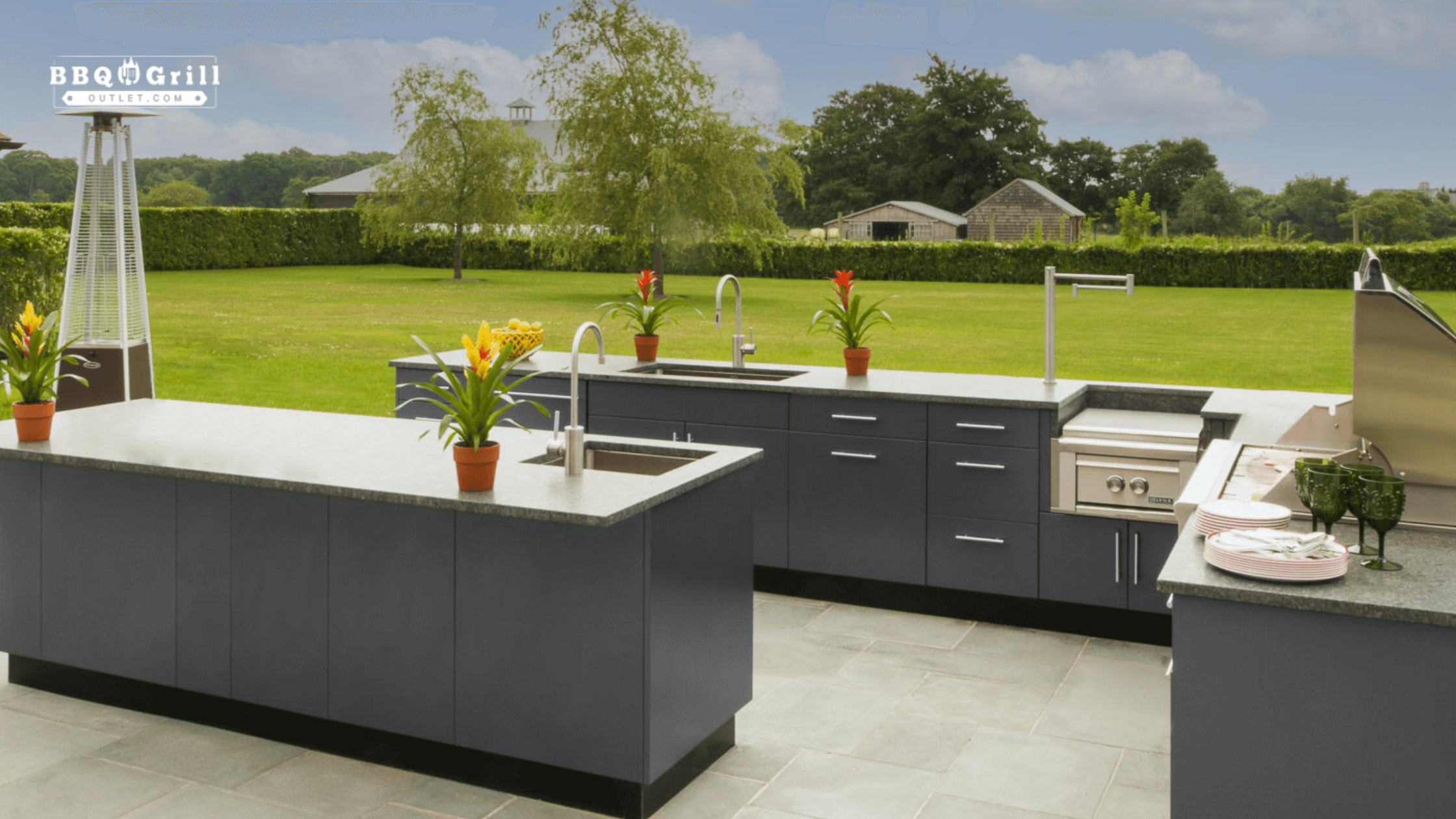Best Materials for Outdoor Kitchens: Top Durable Picks
Posted by Gregg Schoenborn on 1st Jun 2025
Creating an outdoor kitchen is an exciting way to upgrade your backyard, and choosing the best materials for outdoor kitchens is key to ensuring durability and style. The right materials will withstand the elements, require minimal maintenance, and enhance the overall aesthetic of your space.
In this guide, we’ll explore top options for outdoor kitchen islands, including stainless steel, stone, concrete, and tile, along with their pros, cons, and maintenance tips to help you make the best choice.

Why Material Selection Matters for Outdoor Kitchens
When designing an outdoor kitchen, the materials you choose must be able to withstand harsh outdoor conditions, including rain, humidity, temperature fluctuations, and UV exposure.
Using weather-resistant kitchen materials ensures your investment lasts for years while maintaining its visual appeal and functionality.
Factors to consider when choosing materials:
- Durability – Can it withstand extreme weather conditions?
- Maintenance – Is it easy to clean and maintain?
- Aesthetic appeal – Does it match your outdoor design style?
- Cost – Is it within your budget?
Now, let’s dive into the best options for your outdoor kitchen island.
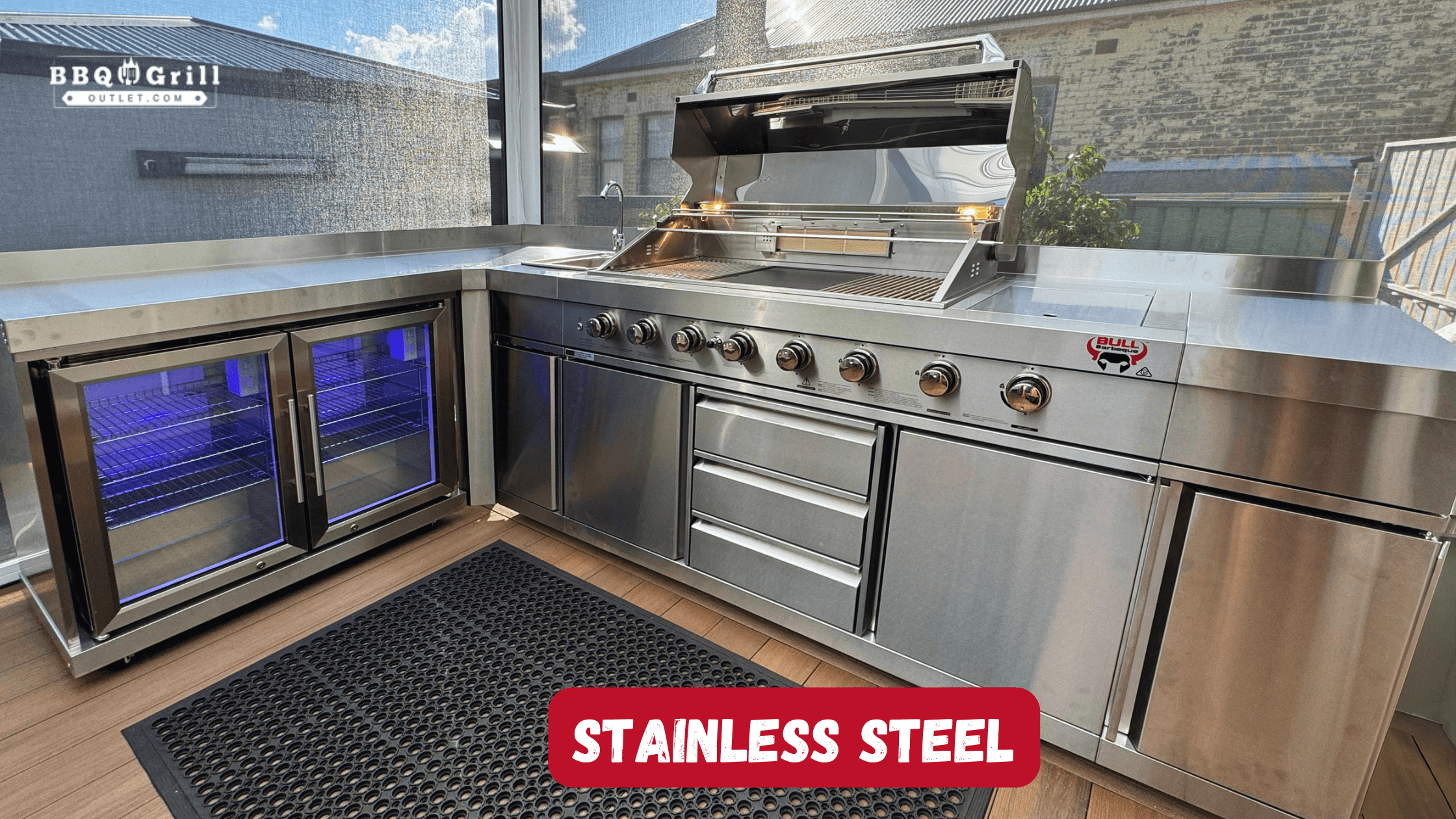
Stainless Steel Outdoor Kitchen Islands
Pros
- Rust-resistant and highly durable
- Easy to clean and maintain
- Sleek and modern aesthetic
Cons
- Can become extremely hot in direct sunlight
- Prone to fingerprints and smudges
Stainless steel is one of the most popular choices for outdoor kitchen islands due to its durability and resistance to rust and corrosion.
A stainless steel outdoor kitchen provides a contemporary and high-end look, making it a favorite among homeowners who want a sleek, professional-grade cooking space.
However, stainless steel can absorb heat quickly, making surfaces uncomfortable to touch during summer. Additionally, while it is easy to clean, stainless steel surfaces show fingerprints and smudges easily, requiring regular wiping.
Maintenance Tips:
- Use a UV-resistant powder coating to reduce heat absorption.
- Regularly clean with a stainless steel cleaner to remove smudges.
- Opt for marine-grade stainless steel (304 or 316) for maximum rust resistance.

Stone & Masonry Outdoor Kitchen Islands
Pros
- Highly durable and weather-resistant
- Aesthetic appeal that blends with natural landscapes
- Customizable with different stone types
Cons
- Expensive and heavy
- Requires professional installation
Stone and masonry outdoor kitchen islands exude a classic, natural look that complements outdoor settings beautifully. Common options include granite, limestone, and slate.
Stone is one of the best materials for outdoor kitchens due to its long lifespan and resistance to extreme temperatures.
While stunning, stone islands require professional installation due to their weight and complexity. Additionally, natural stone can be costly, and some porous stones require regular sealing to prevent moisture damage.
Maintenance Tips:
- Use a protective sealant to safeguard against moisture damage and staining.
- Clean with mild soap and water to avoid damaging the natural surface.
- Choose non-porous stone for less maintenance.
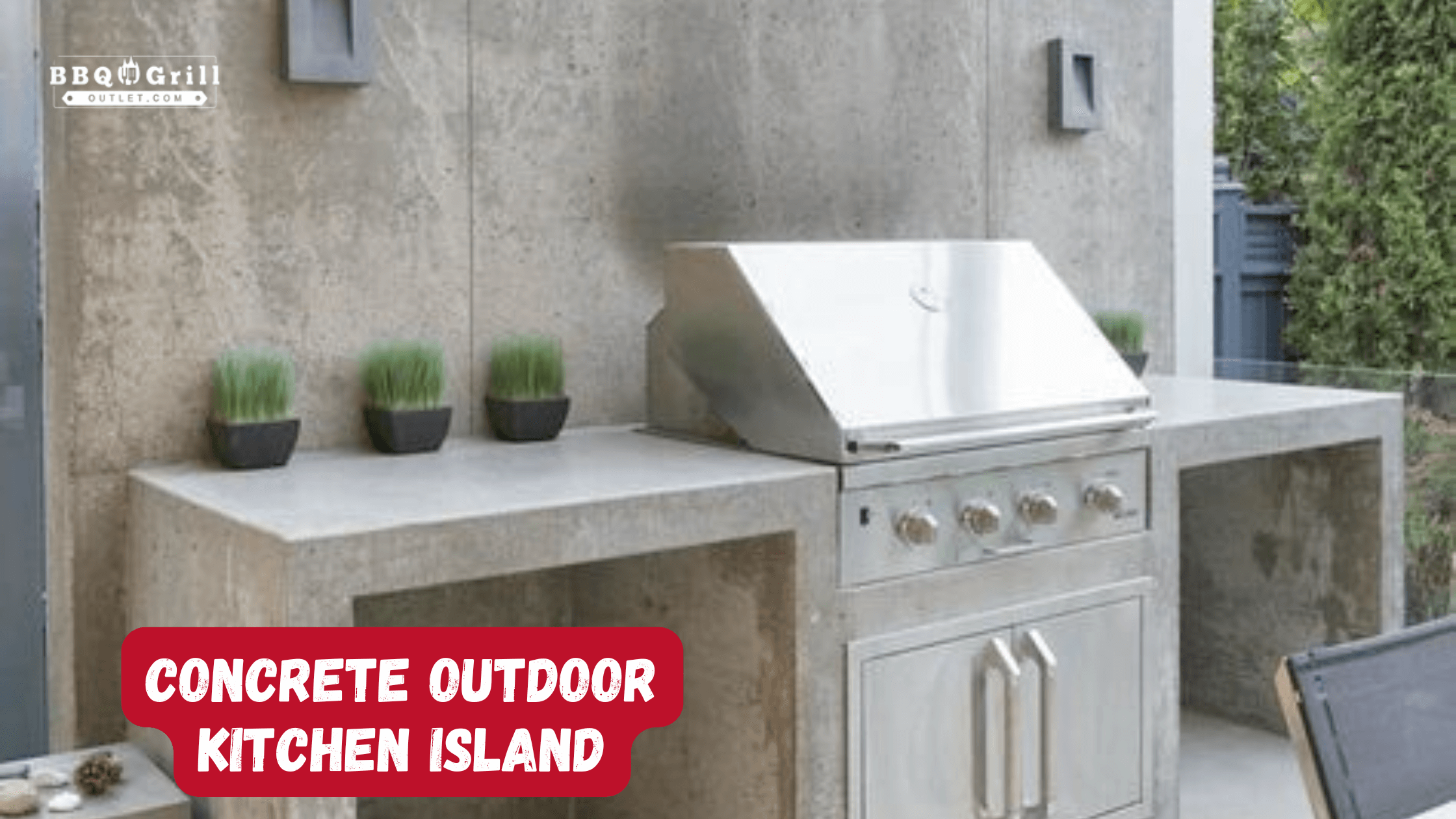
Concrete Outdoor Kitchen Islands
Pros
- Budget-friendly and highly customizable
- Heat-resistant and durable
- Can be molded into different shapes and styles
Cons
- Can crack over time if not sealed properly
- Heavy, requiring strong structural support
Concrete is an excellent choice for those who want a fully customizable outdoor kitchen island. It offers a raw, industrial look and can be cast in any shape, size, or color.
Concrete is naturally heat-resistant and stands up well to outdoor conditions, making it one of the most durable outdoor countertops available.
However, concrete can develop cracks over time, especially if not sealed correctly. Sealing helps prevent moisture penetration and extends its lifespan.
Maintenance Tips:
- Apply a high-quality sealant to prevent cracks and stains.
- Use fiber reinforcement in concrete mix to reduce cracking.
- Clean routinely with gentle soap and water, steering clear of harsh chemicals to preserve the material's
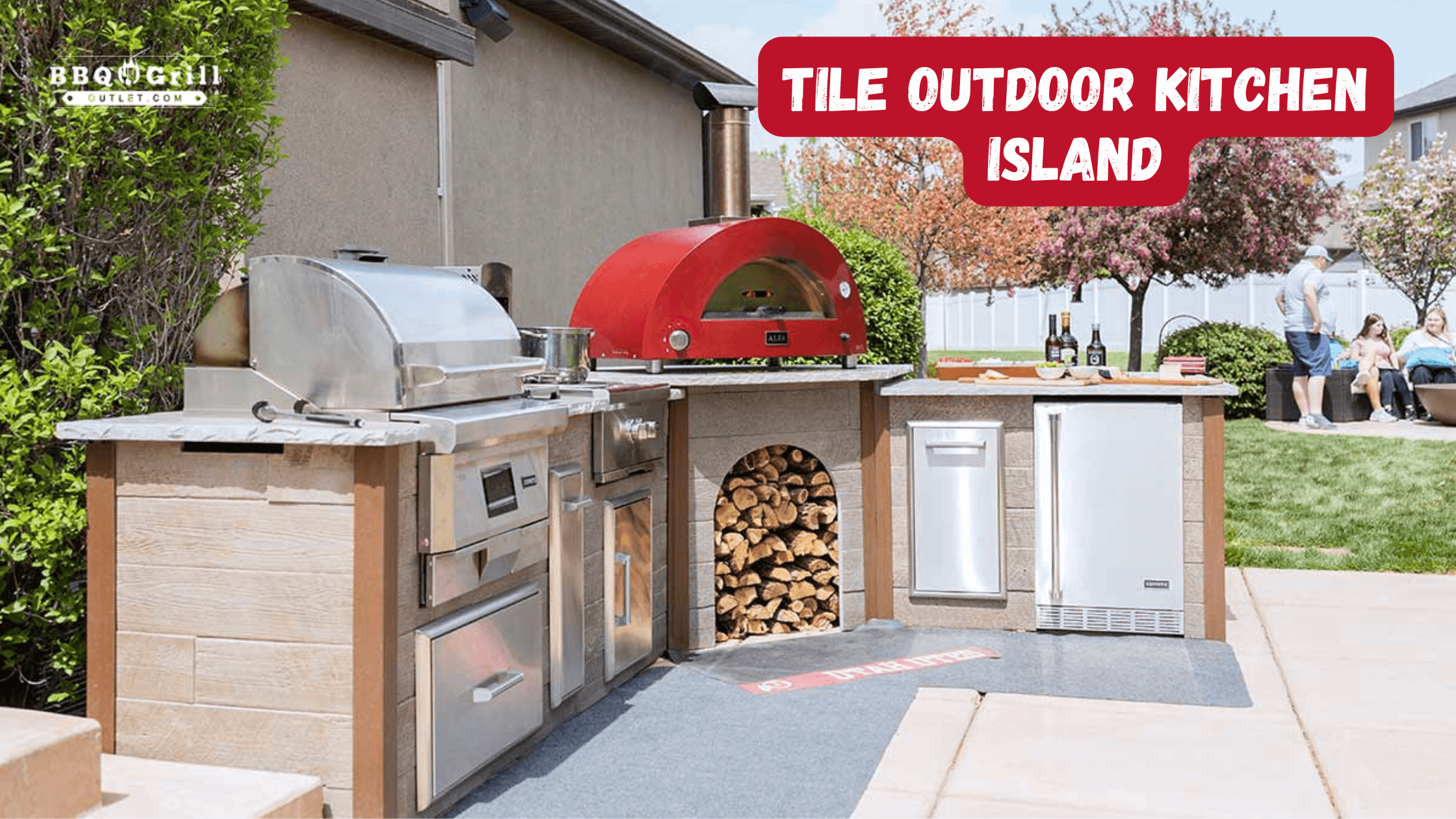
Tile Outdoor Kitchen Islands
Pros
- Affordable and available in various colors and styles
- Heat-resistant and great for warm climates
- Easy to replace individual tiles if damaged
Cons
- Grout requires frequent maintenance to prevent staining
- Tiles can crack under extreme weather conditions
Tile is a cost-effective and stylish option for outdoor kitchen islands. With an array of designs, colors, and patterns available, tile offers a lot of creative freedom.
It is highly weather-resistant and works well in warm climates.
The main drawback of tile is the grout lines, which can become stained over time. Additionally, in colder regions where temperatures fluctuate, tiles can crack.
Choosing high-quality outdoor-rated tiles minimizes these risks.
Maintenance Tips:
- Use weatherproof grout to prevent staining and cracking.
- Clean tiles regularly with a non-abrasive cleaner.
- Choose porcelain or natural stone tiles for better durability.
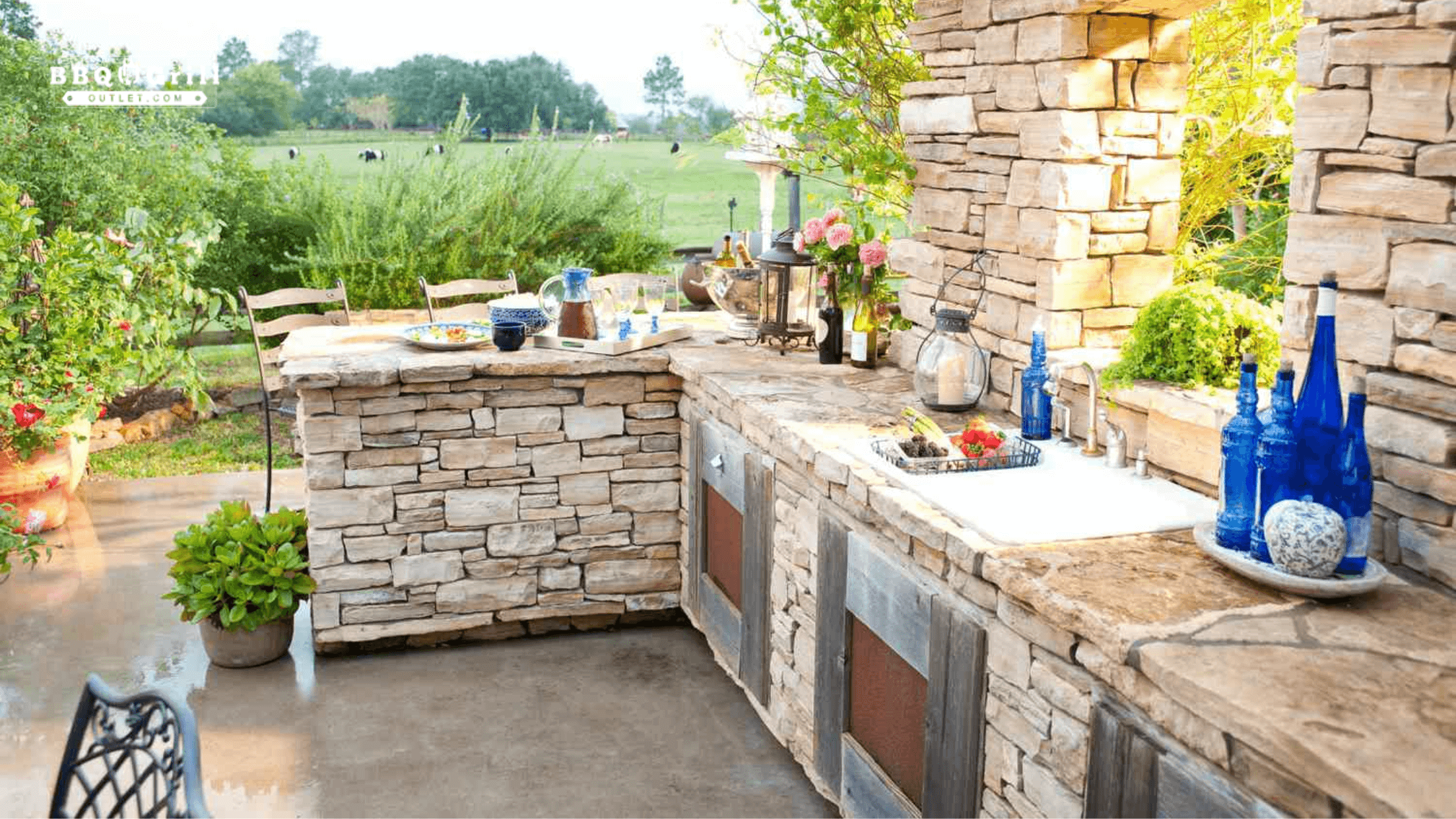
Stone vs. Concrete Kitchen Islands: Which is Better?
When choosing between stone vs. concrete kitchen island materials, it depends on your priorities:
- For durability and elegance, stone is the better option, but it comes at a higher cost.
- For budget and customization, concrete is ideal since it can be shaped into any design.
- For low maintenance, stone (especially granite) is more resistant to wear than concrete.
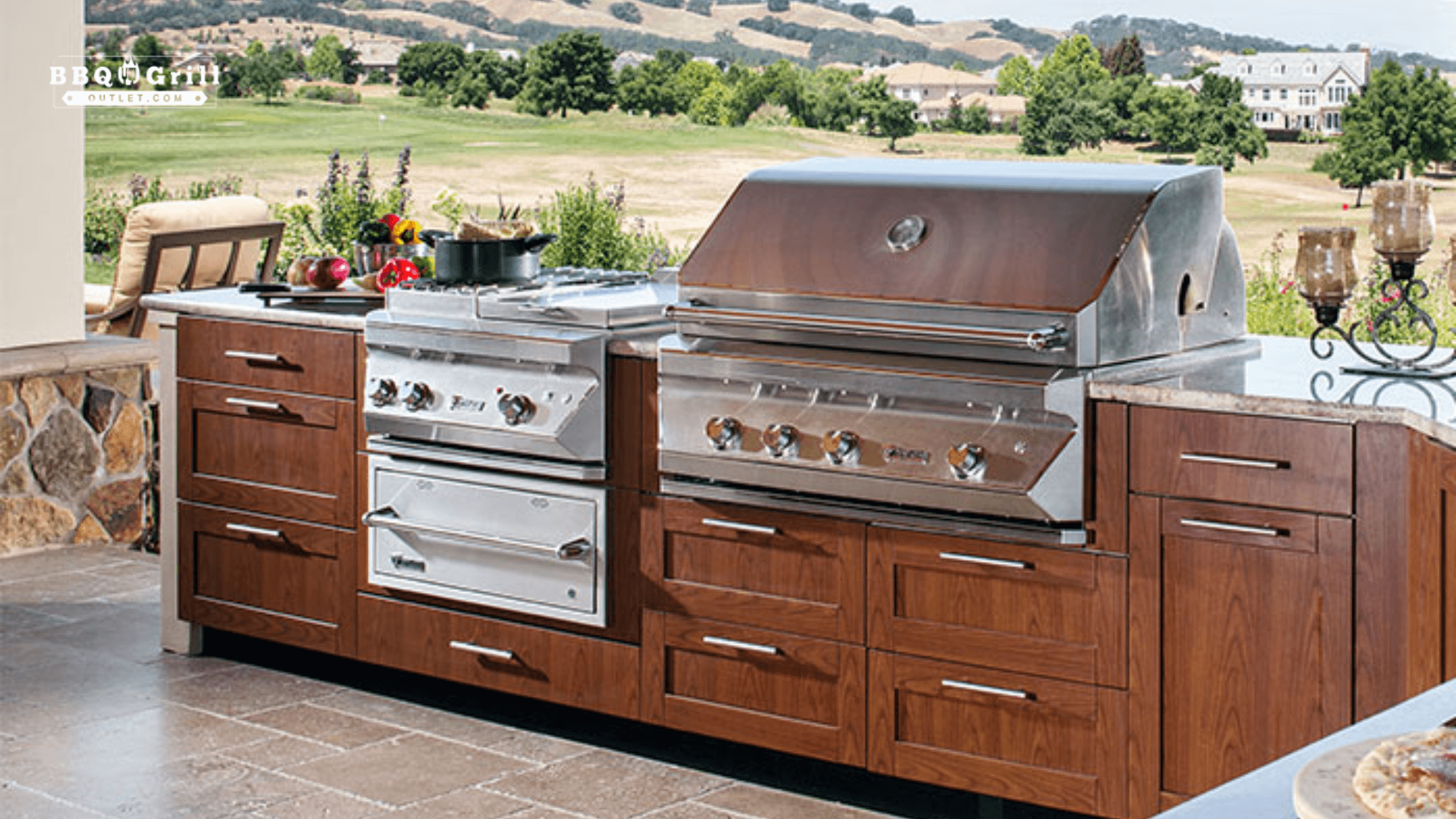
Choosing the Best Outdoor Kitchen Cabinet Materials
In addition to the island countertop, selecting the right outdoor kitchen cabinet materials is crucial.
The best options include:
- Stainless Steel – Durable and rust-resistant, ideal for modern outdoor kitchens.
- Marine-Grade Polymer – Water-resistant and highly durable in extreme weather.
- Teak Wood – Naturally resistant to moisture but requires periodic sealing.
If you're looking for inspiration, check out our guide on the best outdoor kitchen islands of 2025 to see the latest trends, innovative designs, and must-have features.
If you want a sleek stainless steel setup, a rustic stone island, or a fully customized concrete design, this guide will help you find the perfect fit for your space.
Discover the top-rated options and get expert recommendations to create a stylish and functional outdoor kitchen. Read more here.
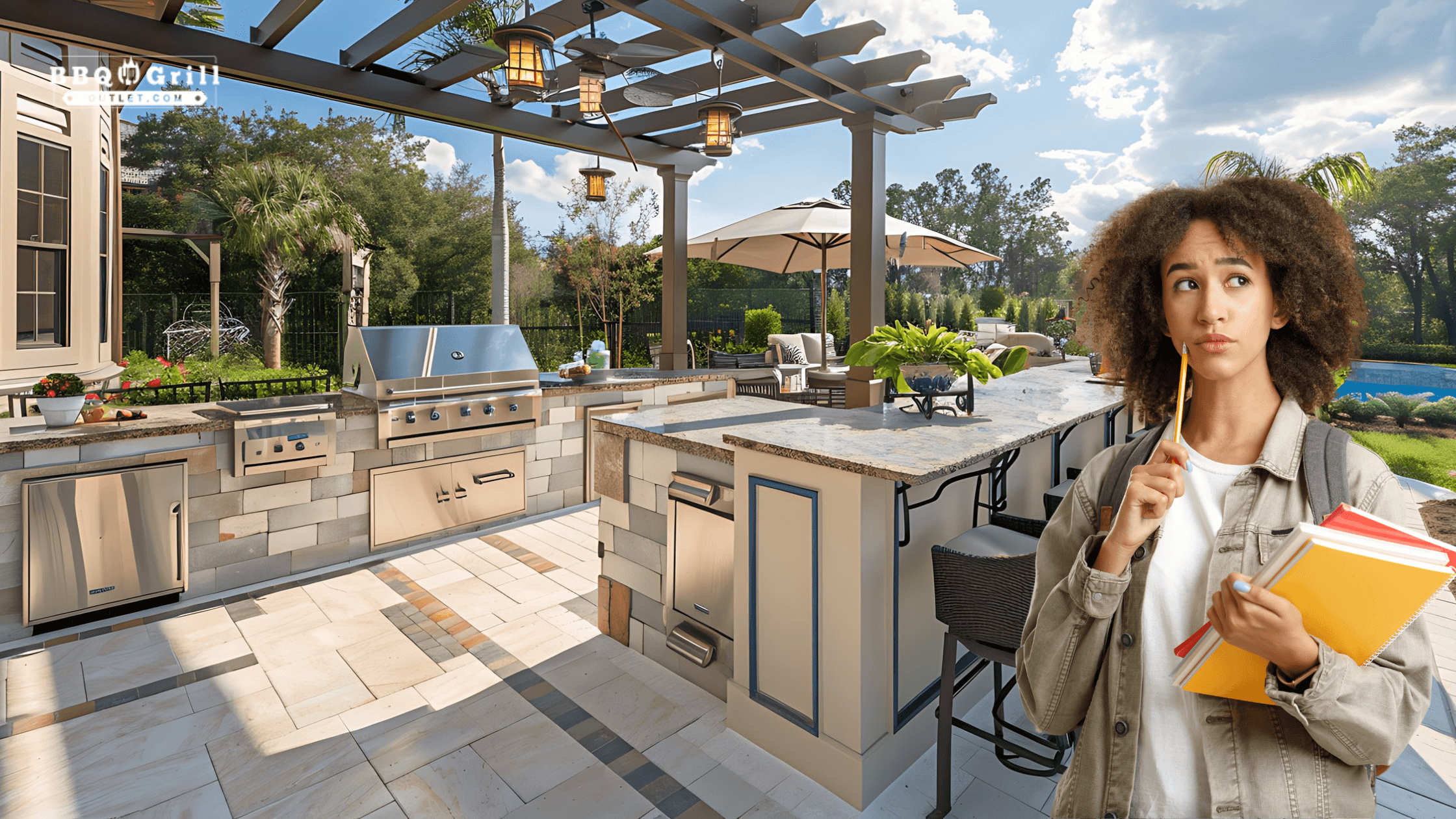
Choosing the Right Outdoor Kitchen Island Material
Choosing the right materials for your outdoor kitchen island ensures longevity, style, and ease of maintenance. If you prefer the sleek look of stainless steel, the natural beauty of stone or concrete, or the affordability of tile, the right choice enhances both function and aesthetics.
To complete your setup, BBQ Grill Outlet offers premium outdoor cooking equipment, including built-in grills, side burners, and durable kitchen accessories designed to withstand the elements.
Call us today at (888) 855-9806 to explore our collection and bring your outdoor kitchen vision to life.


